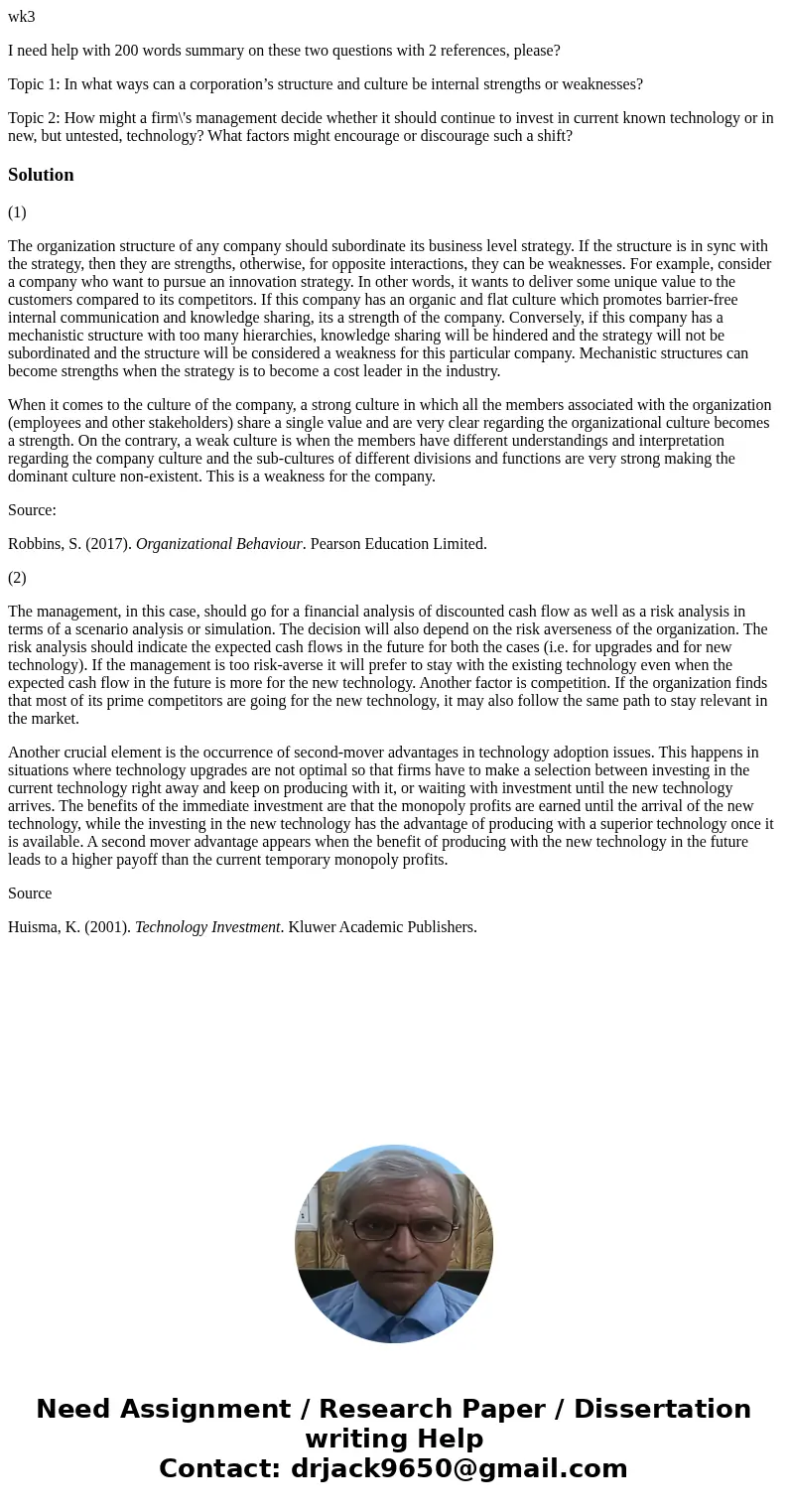wk3 I need help with 200 words summary on these two question
wk3
I need help with 200 words summary on these two questions with 2 references, please?
Topic 1: In what ways can a corporation’s structure and culture be internal strengths or weaknesses?
Topic 2: How might a firm\'s management decide whether it should continue to invest in current known technology or in new, but untested, technology? What factors might encourage or discourage such a shift?
Solution
(1)
The organization structure of any company should subordinate its business level strategy. If the structure is in sync with the strategy, then they are strengths, otherwise, for opposite interactions, they can be weaknesses. For example, consider a company who want to pursue an innovation strategy. In other words, it wants to deliver some unique value to the customers compared to its competitors. If this company has an organic and flat culture which promotes barrier-free internal communication and knowledge sharing, its a strength of the company. Conversely, if this company has a mechanistic structure with too many hierarchies, knowledge sharing will be hindered and the strategy will not be subordinated and the structure will be considered a weakness for this particular company. Mechanistic structures can become strengths when the strategy is to become a cost leader in the industry.
When it comes to the culture of the company, a strong culture in which all the members associated with the organization (employees and other stakeholders) share a single value and are very clear regarding the organizational culture becomes a strength. On the contrary, a weak culture is when the members have different understandings and interpretation regarding the company culture and the sub-cultures of different divisions and functions are very strong making the dominant culture non-existent. This is a weakness for the company.
Source:
Robbins, S. (2017). Organizational Behaviour. Pearson Education Limited.
(2)
The management, in this case, should go for a financial analysis of discounted cash flow as well as a risk analysis in terms of a scenario analysis or simulation. The decision will also depend on the risk averseness of the organization. The risk analysis should indicate the expected cash flows in the future for both the cases (i.e. for upgrades and for new technology). If the management is too risk-averse it will prefer to stay with the existing technology even when the expected cash flow in the future is more for the new technology. Another factor is competition. If the organization finds that most of its prime competitors are going for the new technology, it may also follow the same path to stay relevant in the market.
Another crucial element is the occurrence of second-mover advantages in technology adoption issues. This happens in situations where technology upgrades are not optimal so that firms have to make a selection between investing in the current technology right away and keep on producing with it, or waiting with investment until the new technology arrives. The benefits of the immediate investment are that the monopoly profits are earned until the arrival of the new technology, while the investing in the new technology has the advantage of producing with a superior technology once it is available. A second mover advantage appears when the benefit of producing with the new technology in the future leads to a higher payoff than the current temporary monopoly profits.
Source
Huisma, K. (2001). Technology Investment. Kluwer Academic Publishers.

 Homework Sourse
Homework Sourse